How to Sample Vinyl: The Dark Arts in a Modern Context
A look into the tools to help you sample vinyl.
Vinyl sampling is a practice we’ve used in music for decades. From the days of tape loops to the era of digital samplers and beyond, sampling remains an important aspect of modern music production. Let’s take a look at how to sample vinyl!
In this Article:
You’d think that in the age of digital music, vinyl would be completely redundant. However, there is still a portion of music released exclusively on vinyl today.
Moreover, if that doesn’t excite the crate diggers, there is plenty of vinyl on Discogs that does not exist on digital platforms and more still that has yet to be catalogued.
How to Sample Vinyl
There are a number of different workflows you can use, so we’ll discuss a few and find out more about various tools you can use to ensure the quality of your end results.
How to Sample Vinyl: Turntable
While you could get by sampling with a USB turntable and bypassing more complex workflows, this doesn’t guarantee good results. If you’re looking for warmth and dynamics, it won’t come from using a turntable with an integrated USB interface.

Having a turntable that allows you to precisely control the playback speed of the record is incredibly useful for sampling. This is why DJ turntables like Audio-Technica AT-LP140XP offer the most flexibility for this purpose.
With three different pitch control levels and three playback speeds, you’re equipped to handle records from almost any era.

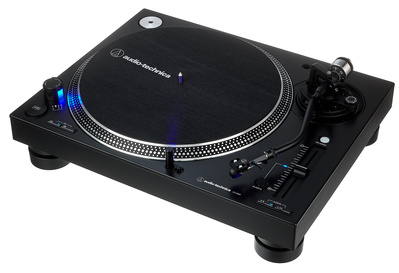
How to Sample Vinyl: Cartridge
A cartridge is a gateway between a record and your sampling signal chain. While it may not be necessary to have a high-end cartridge or tonearm simply for the purpose of sampling vinyl, it can save you time and money.
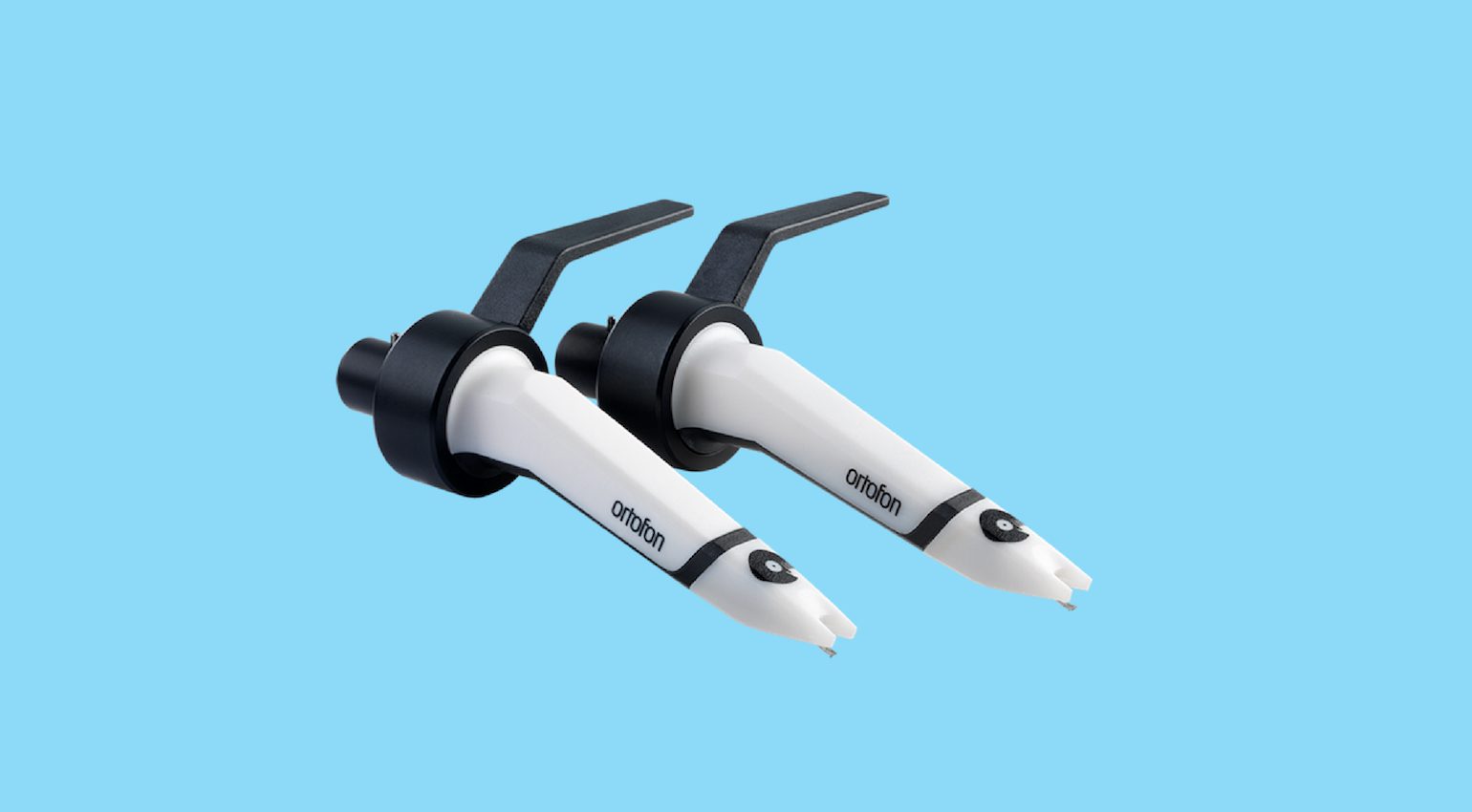
The better the quality of your pickup system, the less processing your audio will need on the way in or in post-production. In addition, using a cheap stylus can actually shorten the life span of your favourite records, so keep this in mind.
The Ortofon Scratch is a DJ cartridge with excellent sound reproduction and the replaceable spherical stylus allows easy back-cueing, which is not possible with an elliptical stylus.

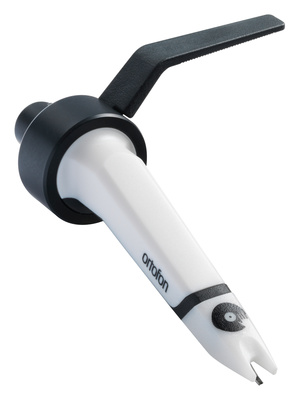
How to Sample Vinyl: What is a Phono Stage?
Why do you need a phono stage? Because of the RIAA equalization curve standard used by vinyl records. Due to the nature of the playback system we use to listen to vinyl, any record produced after 1954 requires RIAA equalization for accurate playback.
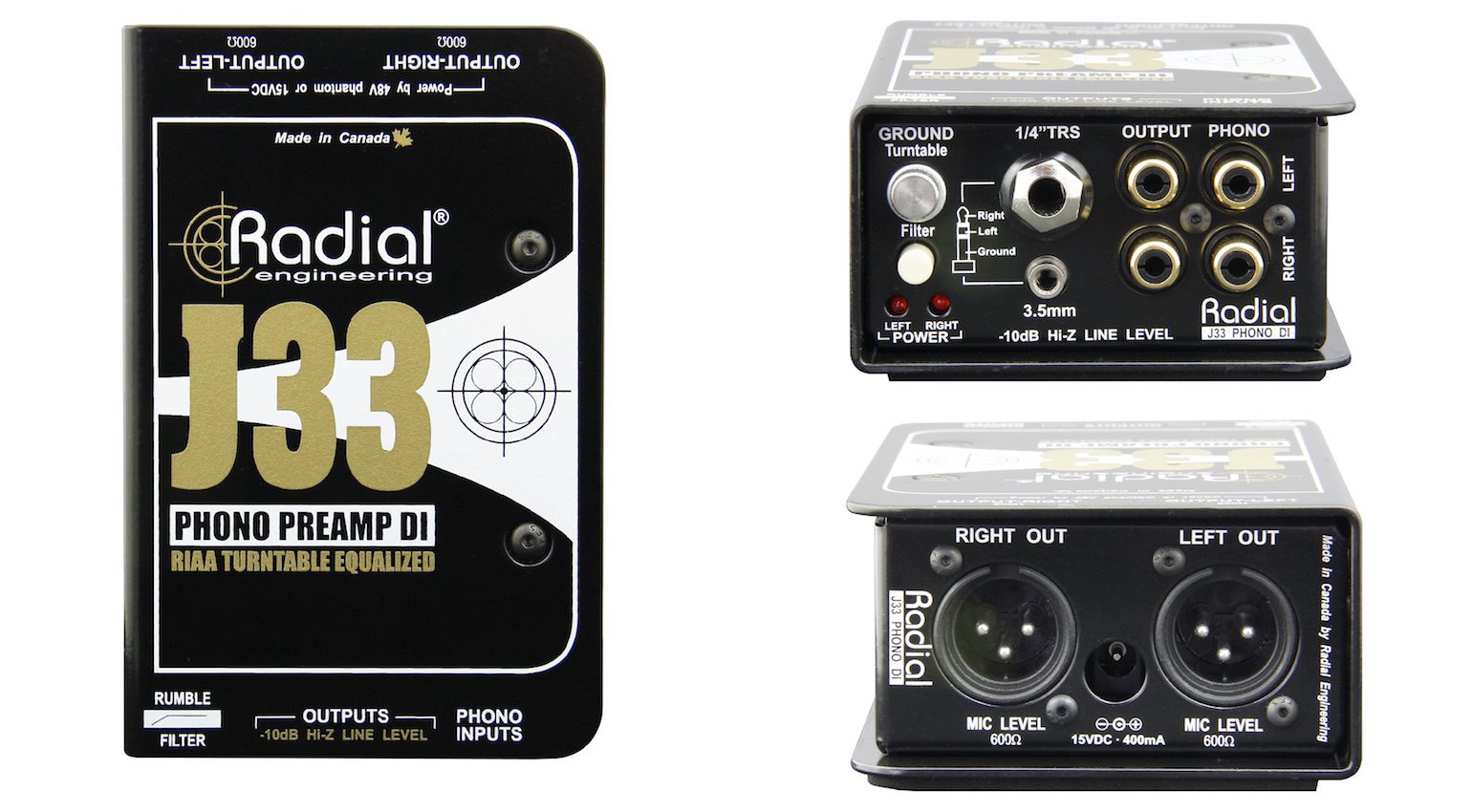
Along with the turntable’s tonearm and stylus cartridge, the phono stage is an essential part of the signal chain that determines the signal quality of the vinyl you are trying to sample. Different quality phono preamps can impart different characteristics onto the sound through the RIAA equalization process, but be aware of the Hi-Fi spending trap lying in wait.
A practical option for home studios comes in the form of the Radial J33. It looks exactly like a DI box, and operates on phantom power from the preamps on your audio interface or mixer. Also, the tanky pocket-sized form factor allows you to take it anywhere, and the XLR outputs make it compatible with any pro audio equipment.
This means that you can run the signal through outboard compressors, EQs, and any other effects to sweeten the sound. Alternatively, if you have a DJ mixer, it also has a phono stage as well as EQ. So this will save you having to rush out and buy a phono preamp for your next vinyl sampling project.

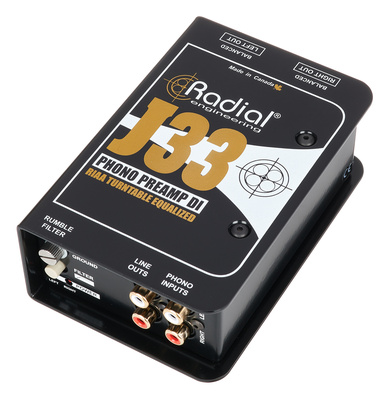


How to Sample Vinyl: Which Audio Interface?
Any audio interface will do the trick for getting audio off the vinyl and into your DAW, but there are a few features that will come in handy. When dealing with old records, you may come across situations where there is an imbalance between the left and right channels. You can adjust this in your DAW by recording onto mono tracks and tweaking the gain digitally, or you can adjust the input gain on the way in.
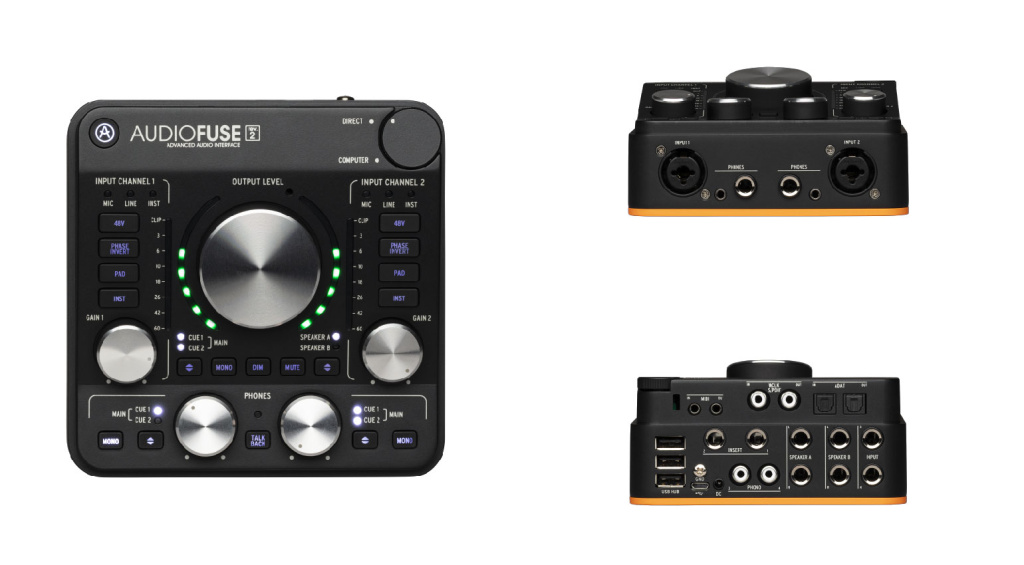
This requires that your audio interface has two preamps, preferrably with XLR combo inputs, that have individual gain knobs. This will allow you to correct the stereo balance if you need to, so you can preserve the integrity of each sound you record. Some audio interfaces, like the Arturia AudioFuse Studio, have a phono preamp built in.
This allows you to plug your turntable into the audio interface directly without the need for an external phono preamp. While this is a convenient feature, you’re still better off investing in a decent phono preamp and using your current interface, rather than spending money on an audio interface that has loads of features you don’t need.

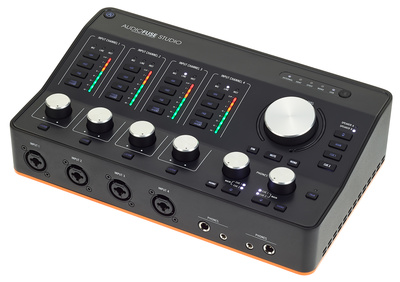
How to Sample Vinyl: Using a Sampler
Although samplers like the MPC traditionally had phono inputs, the advancement of DAW software has provided a far more accurate platform for isolating and preparing each sample. Many hardware and software samplers have integrated sample editors, but you can save yourself time by thinking ahead.

Sample-based beatmaking is about creating a cohesive sound set for the track you’re making, and this creative process is just as important as programming the beat itself. You should get just as much joy from finding unique sample slices and loops as you do from placing your perfect snare hit.
When it comes to samplers, there are so many incredible options available in both hardware and software formats. The stock sampler in your DAW will do the job, and if you need to add texture, a bit reduction effect will help you get that degraded sound of primitive AD/DA converters from the classic 1980s samplers.

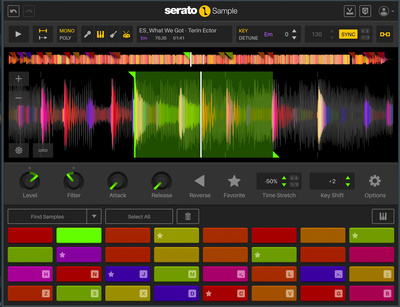
More about How to Sample Vinyl:
- Getting the old-school sampler sound
- Thomann’s guide to turntables
*Note: This article contains promotional links that help us fund our site. Don’t worry: the price for you always stays the same! We will receive a small commission if you buy something through these links. We appreciate your support!
2 responses to “How to Sample Vinyl: The Dark Arts in a Modern Context”


 3,6 / 5,0 |
3,6 / 5,0 | 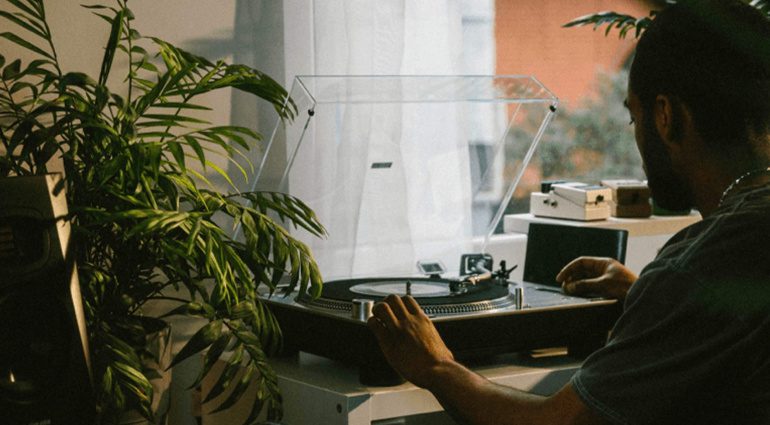


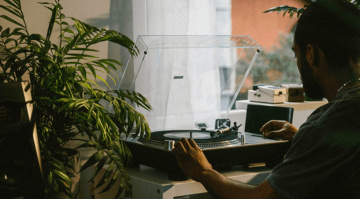

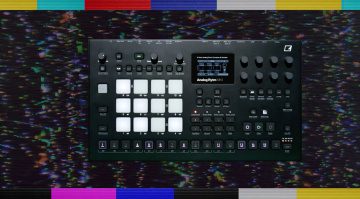
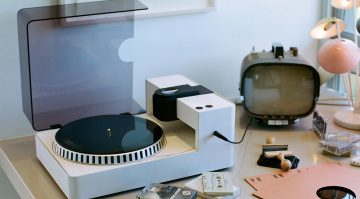
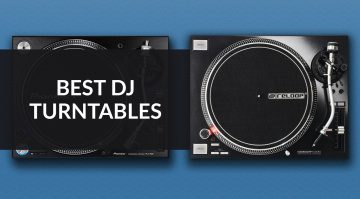


I’ve done my share of sampling vinyl.
not very useful… more like a collection of ads. No mention of Audacity, etc!?